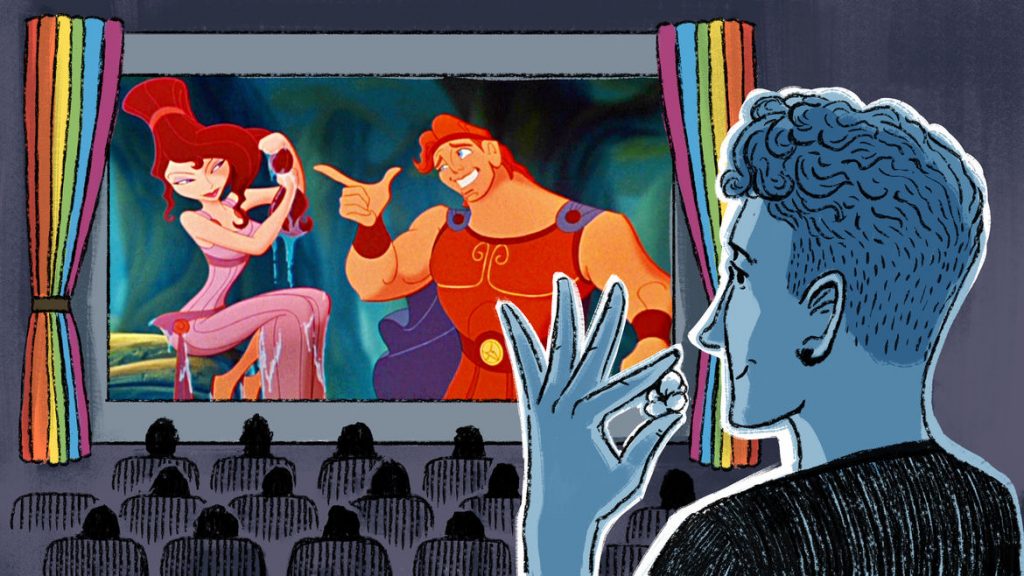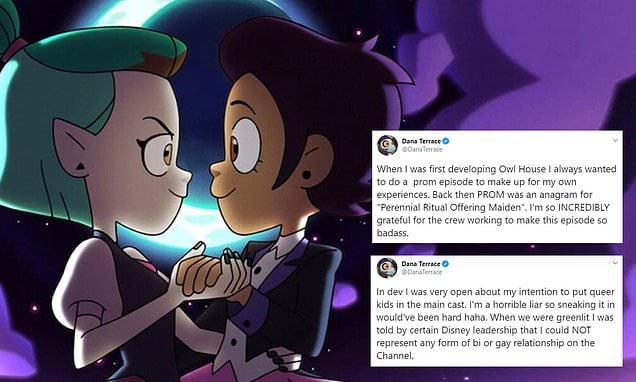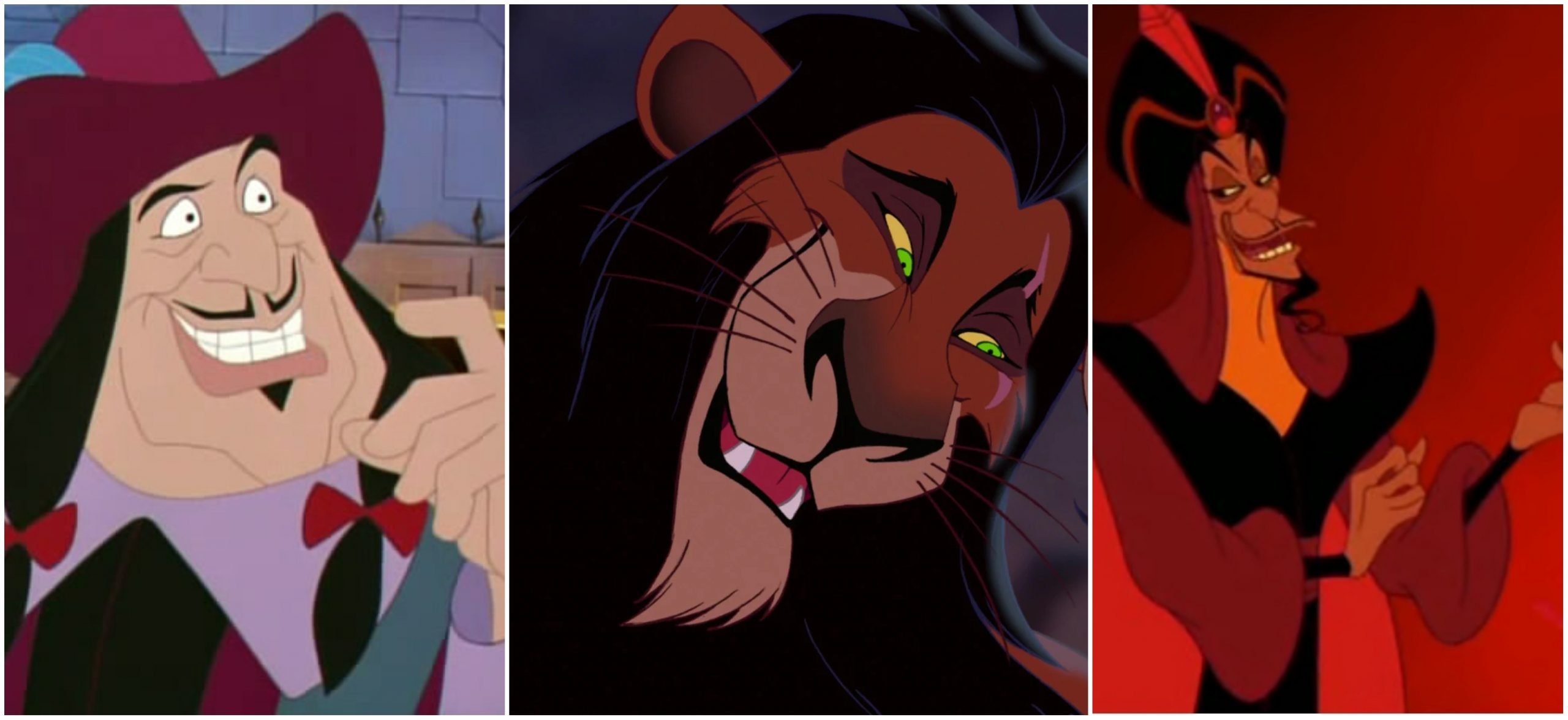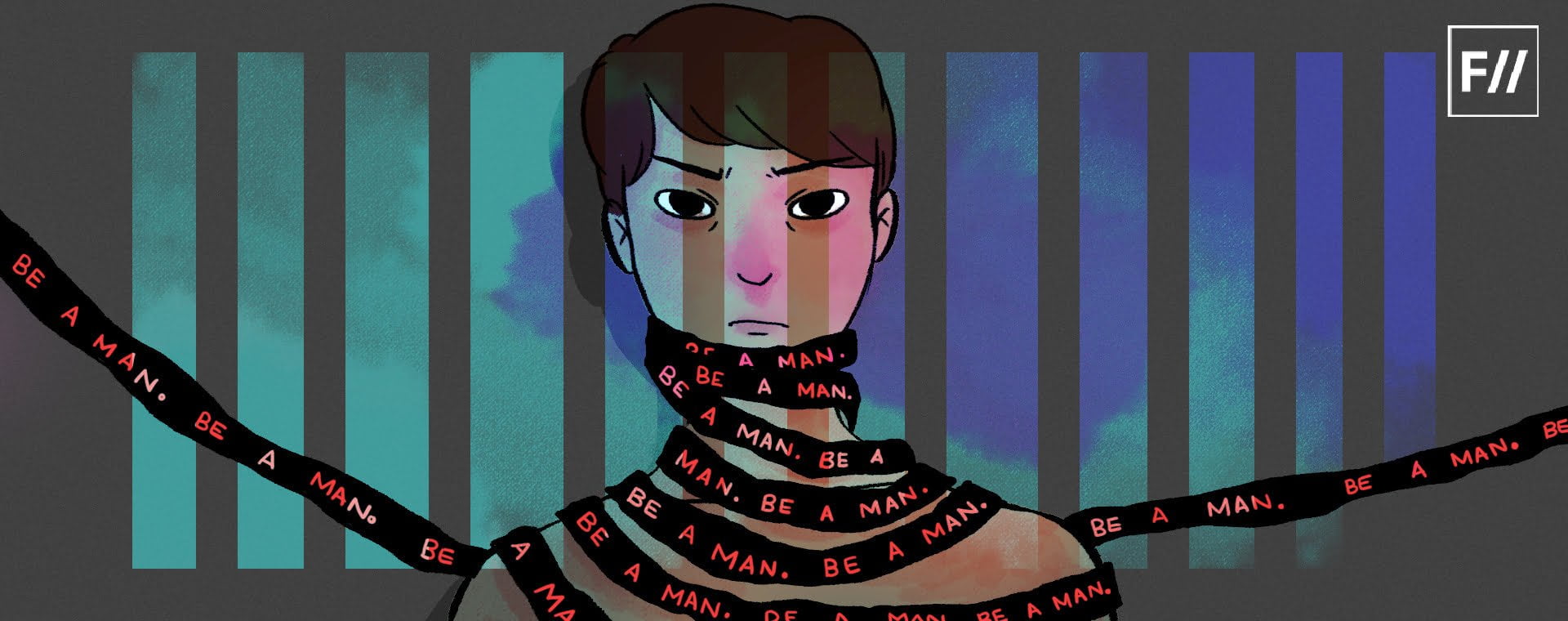Editor’s Note: This month, that is September 2020, FII’s #MoodOfTheMonth is Boys, Men and Masculinities, where we invite various articles to highlight the different experiences of masculinity that manifest themselves in our everyday lives and have either challenged, subverted or even perpetuated traditional forms of ‘manliness’. If you’d like to share your article, email us at pragya@feminisminindia.com.
For a franchise that prides in being the world’s most influential corporation, Disney sure does play with its stereotypes. Traces of inherent racism, constricted gender roles and traditional heterosexual values pervading Disney narratives have often worked to marginalise certain identities while upholding others. Gradually, over time, the franchise has been noted to make a move towards more inclusive content. The gender roles become more flexible by the time we arrive at Brave and even cross-cultural interactions have found their way into films like Big Hero 6 or Moana.
What then, one must wonder, is keeping the entertainment giant from catering to its LGBT audience?

Disney works to marginalise the queer identity through two major ways—first, by attaching negative values to a character stylised with traditional queer traits and second, through an obvious lack of inclusion.
The effeminate villain is among the most important characters of each film, barring of course, our hero. The differences between the two characters is generally shown in extremes: Simba is strong, ambitious, honest while Scar is lazy, scheming and snobbish; Aladdin is muscled, adventurous and admirably rustic while Jafar is wily, melodramatic, averse to physical labour.
The inherent homophobia in Disney movies is most acutely manifested through its portrayal of villains that often act as surrogates for the queer male population at large. The most hated and well-remembered of Disney’s antagonists are almost always the effeminate villain—a fiendish male antagonist characterised by traditionally ‘feminine’ traits, often paraded in queer shades. Consider now, the villain in popular Disney favorites—Jafar from Aladdin, or The Lion King’s Scar, or even Captain Ratcliffe from Pocahontas. What do our fabulously fiendish enemies all have in common, but their effeminacy? TV Tropes identifies the recurring figure as the ‘Sissy Villain’,
“Due to social stigmas against male femininity and “unmanliness”, there’s a strong tendency in fiction to assign effeminate traits to villains: flamboyant mannerisms, delicate voices… etc.”

Evil, it seems, belongs in a silk skirt. The effeminate villain in Disney is almost never openly a member of the LGBT club. Instead, the idea of an aberrant femininity is inherently tied to the characters through what may be termed as ‘queer coding’—the subtextual portrayal of non-normative characters by designing them in traditional queer traits that are immediately recognised by the audience.
The effeminate villain is among the most important characters of each film, barring of course, our hero. The differences between the two characters is generally shown in extremes: Simba is strong, ambitious, honest while Scar is lazy, scheming and snobbish; Aladdin is muscled, adventurous and admirably rustic while Jafar is wily, melodramatic, averse to physical labour. And so on.
Born and bred in a heteronormative culture, the intended younger audience of Disney is bound to attach heteronormative values to the traditional masculine/feminine representations of the two male characters on screen. Heteronormativity, here, refers to a culture thar propagates the idea of cisgender-heterosexuality as the ‘normal’ way of life. The masculine-heterosexual hero is the figure we must vouch for; the effeminate, possibly homosexual villain can only inspire dislike.
Evidently, this problematic representation could be damaging enough. Disney, however, decides to compound its effect with its noteworthy lack of inclusivity.
Disney’s attempt at queer male inclusion is dismal and desperate. Randomly inserted queer representation does not imply progressiveness. The only openly gay character of Disney appears in Frozen, and is brilliantly underplayed. As Anna and Kristoff appear at Oaken’s store, the shop owner offers a brief introduction to his family, which significantly consists of another man and a number of children. That is all we get to see of Disney’s first character out of the closet. And that is it, we must be content with it; the gay audience must take their consolations where they can find them, and content themselves for the most part with winks and nods, hints and subtexts.
The underplaying of the gay sequence finds its way back in the 2017 remake of The Beauty and the Beast. In an interview to the Attitude magazine, director Bill Condon remarked that the movie would find the character of Lefou exploring his sexuality, and that the film narrative would include an “exclusively gay moment.” A rip-roaring exaggeration, when you consider that the milestone moment was in fact, a two-second-long sequence before the final credit roll that saw the character dancing with a man—almost unnoticeable, if you don’t know what you are looking for.
Disney’s attempt at queer male inclusion is dismal and desperate. Randomly inserted queer representation does not imply progressiveness. The only openly gay character of Disney appears in Frozen, and is brilliantly underplayed. As Anna and Kristoff appear at Oaken’s store, the shop owner offers a brief introduction to his family, which significantly consists of another man and a number of children. That is all we get to see of Disney’s first character out of the closet. And that is it, we must be content with it
Also read: In Photos: Queering Spaces And Spacing The Queer
The franchise, however, decided to absolutely wreck its reputation with the release of Wreck it Ralph. In an elaborately detailed article published by Huffington Post, “35-year-old gay man and life-long video gamer” Chris Bogia underlines the jarring homophobia in the aforementioned text:
“That’s when Ralph, the lovable hero (depicted perhaps uncoincidentally as an exaggeratedly tough masculine guy), quips about the King of Candy’s palace color story, pink. After some limp-wristed gesticulating by our villain, Ralph grabs him, shakes him, and calls the confectionary monarch a “nelly wafer”
Although the word is rarely thrown around in colloquial conversation, a quick trip to Google would reveal that the term ‘Nelly’ was often used in American societies as a slang for ‘effeminate homosexuals. Obviously, Bogia wasn’t the only one who felt the jibe at a personal level. Following its release, Wreck It Ralph faced multiple complaints regarding the significant slur, although inciting no comment or clarification from its makers.
Was the impact, then, true to its purpose and place?
Did Disney really intend to, at a single blow, offend an entire population of effeminate gay men?
Or is homophobia, to them, part and parcel of the masculine heterosexual heroic figure?

In a society that is inherently cis-heteronormative, the idea of the queer figure as the evil Other may prove more dangerous than is apparent. A heteronormative culture developed through a series of films that are, to most children with an access to television, almost dictum-like, is almost like an open-invite to the closet. The hetero-propaganda, coupled with the non-inclusive ethos of the Disney films can work to propagate the subconscious belief that a certain group of people is “bad,” “wrong” or “less than.”
Also read: Netflix’s Queer Eye Breaks Social Constructs Even Within The Queer Community
What Disney must now realise is that forced queer readings of a majorly cis-gender heterosexual text is not enough. Occasional queer-coded characters, hypermasculine pretensions and typical binary roles that are now staple in the Disney movie needs to be shoved back into the closet otherwise reserved for the silenced non-normative character. The utopic world that it desires to create will remain incomplete without proper representation of the sexually or gender variant individual. For all its wonder and splendor, the franchise needs to let go of its powerful, dizzying heights of heterosexuality and chart instead, a whole new world of positive representation.
References
- The New York Times
- Hetero-Romantic Love and Heterosexiness in Children’s G-Rated Films
- TV Tropes
- UKEssays
- Todd Hayward, “The Lyin’ King”, Planet Homo 69
- Huffington Post
- National Catholic Register
- Heterosexuality: It’s Just Not Normal!” in Handbook of Lesbian and Gay Studies
- Why Heteronormativity is Harmful
Meghna (she/her) is a student of literature with a knack for writing. Her interests include contemporary feminist politics, with a focus on queer discourses. She can often be found dabbling in poetry when she’s meant to do something more important. You can find her on Instagram and Twitter.




